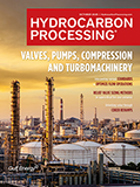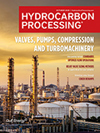May 2025
Heat Exchange/Management
Greener cleaning solutions in oil and gas: A game changer for sustainability and efficiency
Cleaning and maintaining system components and equipment—such as heat exchangers—can consume significant time and resources. Conventional methods rely heavily on harsh, environmentally harmful agents. This article explores an innovative cleaning solution that offers faster, more-effective cleaning with wide-ranging environmental and operational benefits.
This is a preview of our premium content. Thank you for your interest—please log in or subscribe to read the full article.







Comments